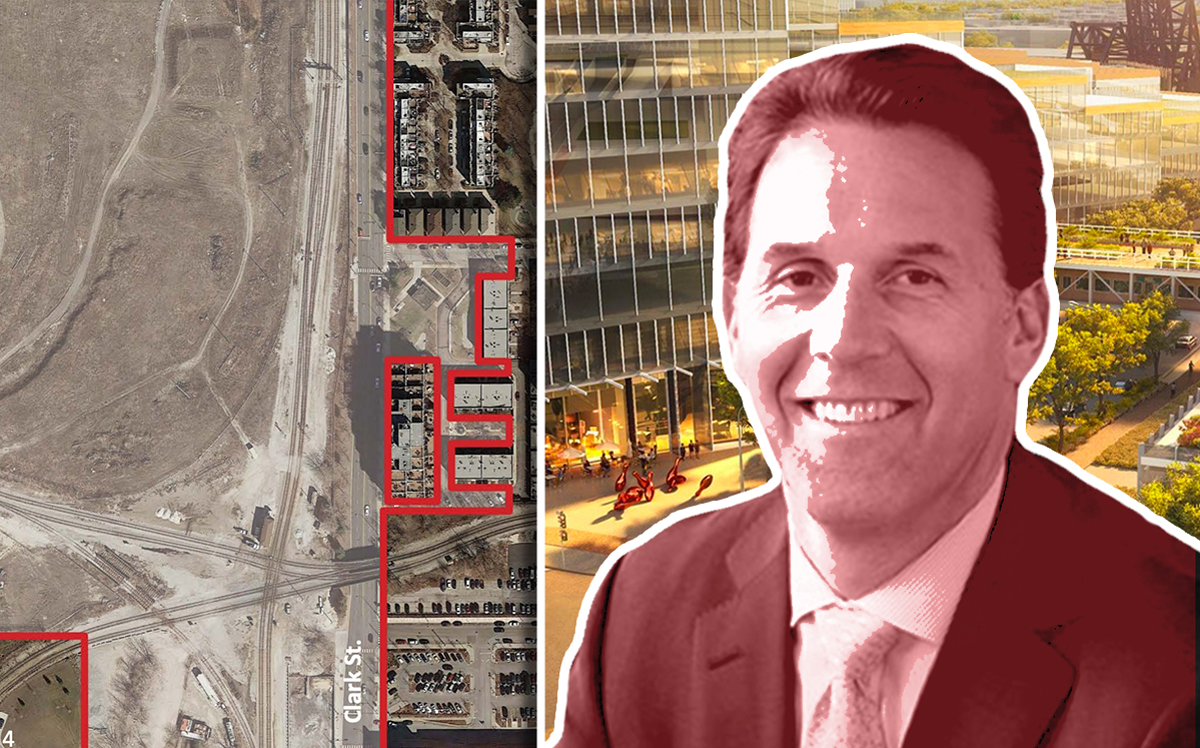UPDATE, Feb. 5, 4:30 p.m.: A key city commission advanced a plan Tuesday to use taxpayer money for public infrastructure projects Related Midwest builds around its planned 62-acre The 78 mega-development.
The Community Development Commission voted to recommend creating a 141-acre tax increment financing district stretching from Harrison Street in the South Loop to Archer Avenue in Chinatown. Tax revenue generated by increased property values in the district during the next 23 years would be diverted into a special fund that could be used to pay for projects within the district. It would not go to area taxing bodies.
Separately, the commission voted to advance an agreement between the city and Related that authorizes the developer to front the cost of some high-profile infrastructure projects, like building a new Red Line station and repositioning a stretch of Metra tracks on the site. In return, the city would repay the developer out of the newly-created TIF fund.
The agreement would put the city on the hook for up to $1.1 billion, including $700 million for the improvements themselves and $400 million in financing costs, according to a draft document submitted to the City Council in December.
The tax dollars will be used “almost exclusively for regional transportation” uses, city planner Chip Hastings said in a presentation during the meeting Tuesday.
In order to propose a new TIF district, city planners must demonstrate the area shows signs of “blight” that can only be remedied with new development. Hastings said the project area, which is bounded by Roosevelt Road, Clark Street, 18th Street and the South Branch of the Chicago River, has “significant connectivity issues” that have led to its enduring vacancy and qualify as “blight.”
The new district will replace the existing Chicago – River South TIF, which traces nearly the same footprint and has generated nearly $239 million in revenue since it was created in 1998, according to the Cook County Clerk’s office. That district is set to expire in 2021.
Related unveiled its $7 billion plan for the barren stretch of riverfront land in May, and since then the proposal for up to 13 million square feet of new residential, office and hotel space has sailed through the city approval process while its North Side counterpart, Sterling Bay’s 54-acre Lincoln Yards proposal, was mired in controversy.
City planners also proposed creating a 168-acre TIF district for the area surrounding Lincoln Yards, one of four districts Mayor Rahm Emanuel is aiming to create or extend before he leaves power in May. Emanuel and David Reifman, the city’s planning commissioner, have argued the public financing tool is the only way to see the ambitious projects through.
The district covering The 78, officially called the Roosevelt/Clark TIF District, would repay Related for large-scale projects including the creation of a new Red Line station at 15th Street, which the developer pitched as a centerpiece of its proposal.
City planners estimate the new Red Line station will cost around $365 million, part of about $551 million in specific public projects they hope to use TIF money to finance. Other predicted expenses include $85 million to move the existing Metra tracks, $79 million to rebuild Clark Street and $10 million for a seawall along the river.
Related originally had planned to build the station on the east side of Clark Street, but pushback from Alderman Pat Dowell (3rd) spurred the developer to move its proposal across the street and into the 25th Ward of Alderman Danny Solis.
The district boundaries were amended before Tuesday to exclude the 2.4-acre Cotton Tail Park, near where the Red Line station was originally planned. Dowell spoke during the hearing in favor of the TIF district, citing the change.
Solis has been a staunch backer of The 78 throughout the city planning process, but his disappearance from the City Council amid a corruption scandal suddenly has cast a layer of doubt over the ambitious plan. Alex Acevedo, one of the candidates vying to replace Solis as alderman, on Monday called for public deliberations around The 78 to pause while the city’s inspector general investigates any possible impropriety in the planning process.
Acevedo repeated his demand Tuesday, saying the city “can wait a few more months to make sure this project, which could take more than a quarter-century to build, is ethical and free of scandal.” But he did not make any specific allegations of wrongdoing on the part of Related or Solis regarding The 78.
Byron Sigcho-Lopez, another candidate for 25th ward alderman, also called to delay the approval process, saying it “rests on a letter of support from an alderman who is still missing.”
Related Midwest has not been directly implicated in any of the accusations leveled against Solis or Alderman Ed Burke (14th), but the developer did retain Burke’s private law firm, Klafter & Burke, for property tax representation on The 78 beforing firing it.
Per city rules, all residential developments proposed inside a TIF district must charge reduced rents on at least 20 percent of units, meaning Related would have to make about 2,000 of its units affordable. But the developer plans only about 500 affordable apartments in the development itself, and would pay to build or subsidize about 1,000 affordable units off-site. The company would pay $10 million into the city’s Affordable Housing Opportunity Fund to get out of building the remaining 500 units.
The new TIF district and development agreement must still be approved by the City Council.
In an interview with The Real Deal in November, Related Midwest president Curt Bailey said he hopes to complete the first phase of The 78, comprising some 6 million square feet of development, by 2022.
